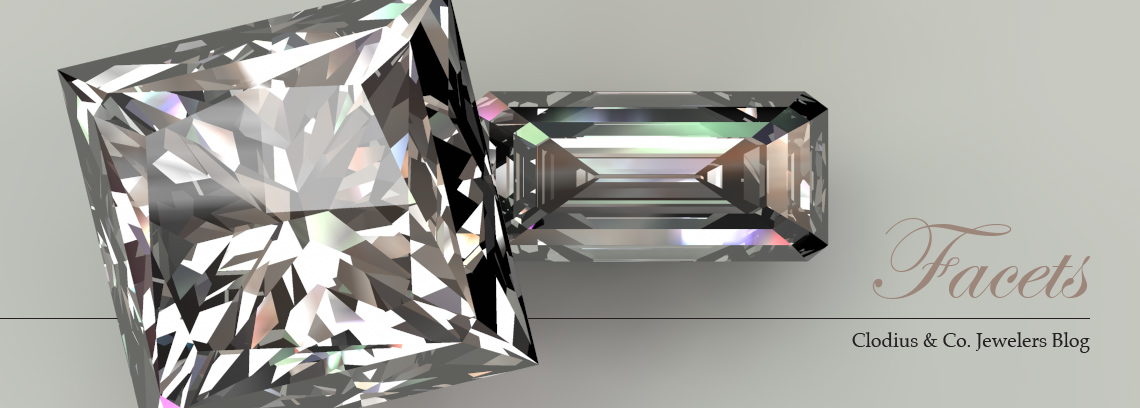Jewelry Blog Rockford, IL
Stanford Scientists Transform Fossil Fuel Molecules Into Pure Diamond March 2, 2020
A new study from Stanford University and SLAC National Accelerator Laboratory reveals how — with the right amount of pressure and a modest amount of heat — a substance found in crude oil and natural gas can be transformed into pure diamond. The findings were published February 21 in the journal Science Advances.
“Starting with these building blocks, you can make diamond more quickly and easily, and you can also learn about the process in a more complete, thoughtful way than if you just mimic the high pressure and high temperature found in the part of the Earth where diamond forms naturally,” said Wendy Mao, a Stanford mineral physicist who heads the lab where the study’s experiments were performed.
The research team began with three types of powder refined from petroleum. The odorless, slightly sticky powders resemble rock salt, but with atoms arranged in the same spatial pattern of those that make up diamond crystal. Unlike diamond, which is pure carbon, the powders (called diamondoids) also contain hydrogen.
The diamondoid samples were guided into a small pressure chamber called a diamond anvil cell, which pressed the powder between two polished diamonds. With a turn of a screw, the device mimicked the intense pressure found deep within the Earth. After squeezing the diamondoid samples and blasting them with a laser, a second, cooler laser beam was used to help shape the resulting diamond. Finally, results were examined through a battery of tests and computer models, which helped to explain how the transformation had unfolded.
“A fundamental question we tried to answer is whether the structure, or number of cages, affects how diamondoids transform into diamond,” said study senior author Yu Lin, a staff scientist in the Stanford Institute for Materials and Energy Sciences (SIMES) at SLAC National Accelerator Laboratory. The three-cage diamondoid, called triamantane, was found to reorganize itself into diamond with little energy.
At 1160 degrees Fahrenheit (the temperature of red-hot lava) plus 20 gigapascals, a pressure hundreds of thousands of times greater than Earth’s atmosphere, triamantane’s carbon atoms snap into alignment and its hydrogen scatters, falling away. The transformation was both immediate and direct.
If you can make even small amounts of this pure diamond, then you can dope it in controlled ways for specific applications,” said Lin.
Throughout history, diamond has served as a powerful symbol of love, power, and beauty. Natural diamonds form hundreds of miles beneath the Earth's surface, under extreme heat and pressure that causes carbon to crystalize. Those seen above ground were likely propelled upwards through ancient volcanic eruptions.
For more than 60 years, scientists have been turning various substances into synthetic diamonds through methods involving massive amounts of energy and time. The Stanford researchers sought to find a simpler method.
“We wanted to see just a clean system, in which a single substance transforms into pure diamond — without a catalyst,” said the study’s lead author, Sulgiye Park, a postdoctoral research fellow at Stanford Earth.
According to the study, the mechanisms for this transformation will be important for scientific and industrial applications. This is because diamond’s physical properties of extreme hardness, optical transparency, chemical stability, and high thermal conductivity make it particularly valuable for medicine, industry, technology and biological sensing.
“What’s exciting about this paper is it shows a way of cheating the thermodynamics of what’s typically required for diamond formation,” said Stanford geologist Rodney Ewing, a co-author on the paper.
The minute sample size inside a diamond anvil cell makes this approach impractical for synthesizing much more than the specks of diamond that the Stanford team produced in the lab, Mao added.
“But now we know a little bit more about the keys to making pure diamonds,” she said.
Credit: Image by Rob Lavinsky, iRocks.com – CC-BY-SA-3.0 / CC BY-SA.
About the Author
With over 250 years of combined experience, our staff truly understands why you purchase jewelry, and what it means to you. Clodius & Co. is known as Rockford's custom jeweler and more. Why? Because we like to get acquainted with our customers while we help them select or create their jewelry.
Other Recent Blog Entries
Clodius & Co. 25th Anniversary Celebration
A Love Story Realized: Travis Kelce Proposes to Taylor Swift With Vintage Diamond
Your Forever Begins This Summer—Say Yes with Clodius & Co.
Celebrate Every Kind of Dad – Watches & Handmade Gifts at Clodius & Co.
Gift with Purchase – A Special Valentine’s Offer
















